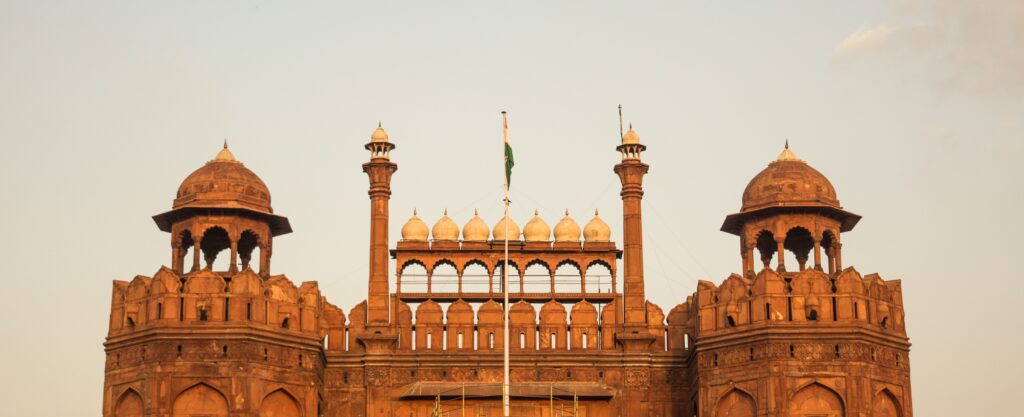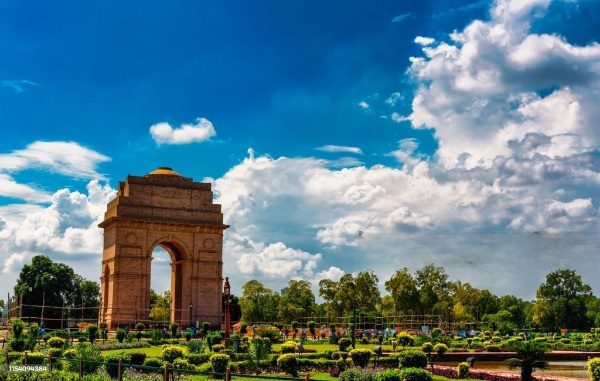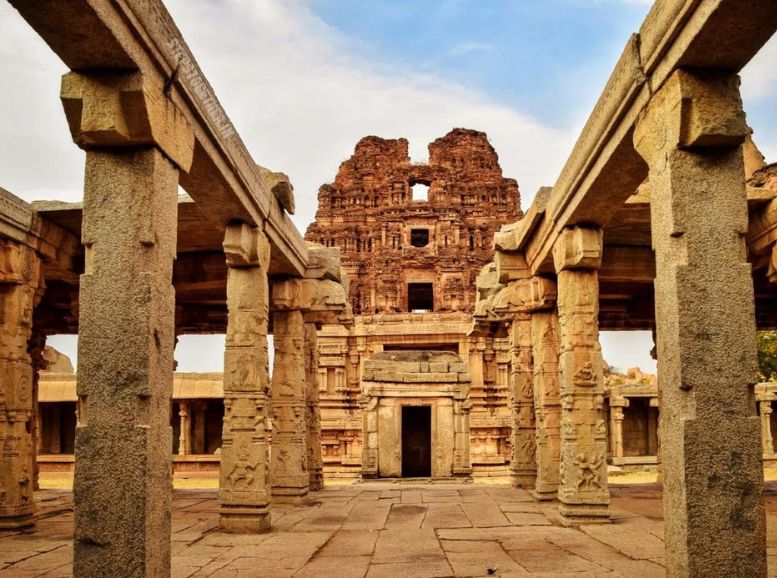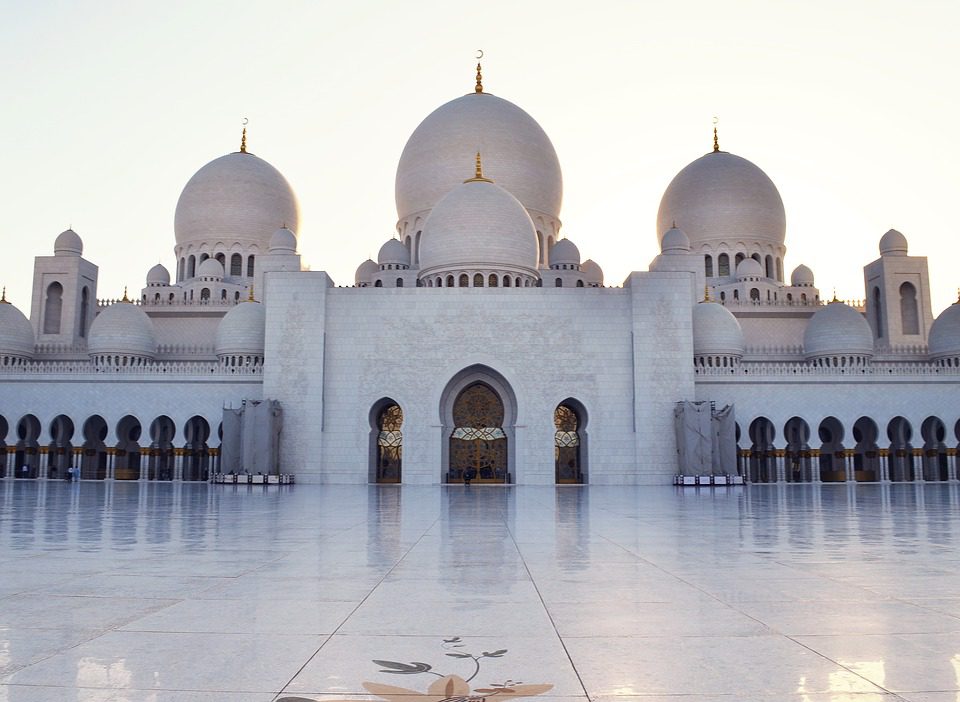[ad_1]
As the land of ancient civilizations, diverse cultures, and majestic architecture, India is home to a plethora of national monuments that are a testament to its rich history and heritage. From the mighty Red Fort to the intricate carvings of the Ajanta Caves, these monuments are not just tourist attractions but also windows into the country’s past, revealing the stories of empires that once flourished here. As you plan your trip to India, get ready to be awestruck by the sheer scale, grandeur, and beauty of these Indian national monuments. Exploring Indian National Monuments offers a glimpse into the rich history and cultural heritage of India.
LET’s Indian National Monuments: A Journey Through History and Culture
In-depth Exploration: Red Fort, Delhi

As the symbol of Mughal power and splendor, the Red Fort in Delhi is an absolute must-visit. Located on the western banks of the Yamuna River, this majestic fort complex is a sprawling 254 acres of beautifully manicured lawns, intricate architecture, and bustling markets. As you step through the entrance gates, you’re immediately transported to a world of grandeur and opulence. The intricate stone carvings, stunning pavilions, and ornate gateways will leave you spellbound.
Take a leisurely stroll along the ramparts, offering breathtaking views of the city and the river below. Don’t miss the Diwan-e-Khas, a stunning white marble pavilion with intricate carvings and inlays, which was once the throne room of the Mughal emperors. And if you’re visiting in October, you’re in for a treat as the fort hosts the stunning Dussehra festival, which is a sight to behold.
In-depth Exploration: Taj Mahal, Agra
No trip to India would be complete without visiting the iconic Taj Mahal, a white marble mausoleum that shines like a beacon of love and devotion. Located on the southern banks of the Yamuna River in Agra, the Taj Mahal is a UNESCO World Heritage Site and one of the Seven Wonders of the World. As you approach the complex, the intricate marble inlays and delicate carvings on the walls begin to shimmer in the sunlight, casting a golden glow.
Take a moment to gaze at the Taj Mahal from across the river, and you’ll understand why it’s considered one of the most romantic buildings in the world. The intricate inlays of precious stones, the subtle nuances of the architecture, and the breathtaking beauty of the surrounding gardens all combine to create an unforgettable experience. Be sure to visit at sunrise or sunset to avoid the crowds and witness the Taj in its full glory.

In-depth Exploration: Hampi, Karnataka

Hampi, the ancient capital of the Vijayanagara Empire, is a fascinating ruin that will transport you back in time to the 14th century. This temple town is a treasure trove of stunning architecture, vibrant history, and mesmerizing natural beauty. Take a leisurely stroll through the ruins, marveling at the intricate carvings, vibrant colors, and imposing structures.
Be sure to visit the Vitthala Temple, a stunning example of Hindu architecture with its ornate gateway and impressive carvings. And don’t miss the magnificent Matanga Hill, which offers breathtaking views of the surrounding landscape. Take a sunset cruise on the Tungabhadra River to watch the ancient temples come alive in the golden light.
Engage with Local Guides
Enhance your exploration by engaging with local guides who offer deep insights into the history and cultural significance of Indian National Monuments. These guides enrich your visit with stories and details that bring each site to life, making your experience more meaningful and educational. Their narratives often include fascinating anecdotes about the people, events, and architectural techniques that shaped these monuments over centuries. By immersing yourself in these stories, you gain a deeper appreciation for the cultural tapestry woven into India’s heritage sites, fostering a connection that transcends mere sightseeing.
Plan Your Itinerary Around Key Monuments
Start your journey by planning your itinerary around key Indian National Monuments. Begin with iconic sites like the Taj Mahal, Red Fort, and Qutub Minar in Delhi, ensuring you cover diverse periods and architectural styles. These monuments not only showcase India’s architectural brilliance but also serve as gateways to understanding the country’s history and cultural evolution. Exploring these sites first provides a solid foundation for appreciating the depth and diversity of India’s heritage as you travel across different regions.
Understand the Historical Significance
Delve into the historical significance of each monument to uncover layers of meaning and cultural context. The Taj Mahal, with its ethereal beauty, symbolizes the enduring love of Emperor Shah Jahan for his wife Mumtaz Mahal. Meanwhile, the Red Fort, a masterpiece of Mughal architecture, stands as a testament to the empire’s grandeur and administrative prowess. Understanding these stories not only enriches your visit but also deepens your appreciation for the historical narratives woven into India’s iconic landmarks.
Explore Architectural Marvels
Marvel at the architectural brilliance of Indian National Monuments, where every structure tells a story through its intricate carvings, towering minarets, and majestic domes. These monuments are more than just buildings; they are living testaments to the cultural fusion and artistic prowess of their respective eras. Whether exploring the delicate filigree of Rajput palaces or the symmetry of Buddhist stupas, each monument offers a glimpse into India’s rich architectural heritage, showcasing craftsmanship that has withstood the test of time.
Engage with Local Guides
Enhance your visit to Indian national monuments by engaging with knowledgeable local guides who offer a wealth of information beyond the surface. These guides not only share lesser-known facts and anecdotes but also provide context that enriches your understanding of the monument’s cultural and historical significance. Their expertise can reveal hidden details and stories that breathe life into the stones and structures, creating a more immersive and enlightening experience as you delve into India’s diverse national heritage.
Experience Cultural Performances
Immerse yourself in cultural performances held at select monuments, where the past comes alive through vibrant traditions. Experience traditional dance forms like Bharatanatyam or Kathak, accompanied by soul-stirring music concerts that resonate within ancient walls. During evening light shows, witness narratives unfold through illuminating projections, blending history with artistic expression. These performances not only entertain but also deepen your connection to the monument’s heritage, offering a sensory journey through India’s cultural tapestry.
Capture Moments Through Photography
Capture the timeless beauty of Indian National Monuments through photography, where every angle unveils a new perspective on history and artistry. Whether framing the intricate details of Mughal gardens or the symmetrical perfection of South Indian temples, each shot preserves a piece of India’s architectural legacy. From the bustling courtyards of forts to the tranquil serenity of temple complexes, photography allows you to encapsulate the essence of these monuments, ensuring their beauty endures beyond your visit.
Respect and Preserve Heritage
Conclude your journey by reflecting on the significance of respecting and preserving heritage for future generations. By adhering to guidelines, such as refraining from touching delicate carvings or maintaining silence in sacred spaces, you contribute to the conservation of these priceless monuments. Avoid littering and participate in local initiatives that promote sustainability and preservation. Your actions today ensure that these cultural treasures continue to inspire and educate visitors for years to come, safeguarding India’s rich heritage for future explorers to cherish.
Detailed Information: Planning Your Trip
- Getting There: Most Indian national monuments are well-connected by road, rail, or air. Delhi is easily accessible from international airports, while Agra is about an hour’s drive from Delhi.
- Best Time to Visit: The best time to visit Indian national monuments is during the cooler months (October to March), when the weather is pleasant and the crowds are manageable.
- Cost: Entrance fees for Indian national monuments range from ₹50 to ₹500 ( approx. $0.70 to $7). Accommodation options range from budget-friendly guesthouses to luxury hotels, with prices starting from ₹1,000 to ₹5,000 (approx. $14 to $70) per night.
- Cultural Significance: Indian national monuments are a testament to the country’s rich cultural heritage. Be respectful of the cultural significance and traditions of these sites.
Tips and Recommendations
- Respect local customs by dressing modestly when visiting religious or cultural sites to show reverence and blend in with local practices.
- Ensure your comfort under the Indian sun by carrying ample water and sunscreen, essential for staying hydrated and protected from intense UV rays.
- Embrace the lively atmosphere of Indian markets by bargaining with vendors, a cultural norm that can lead to great savings and memorable interactions.
- Indulge in the rich flavors of Indian cuisine, from savory kebabs to aromatic biryani, to savor authentic dishes that reflect the country’s diverse culinary heritage.
- Plan ahead for popular attractions where long lines and bustling crowds are common, allowing for a smoother and more enjoyable sightseeing experience.
Conclusion
Exploring India’s national monuments is a journey through history, culture, and architecture. From the grandeur of the Red Fort to the intricate carvings of the Ajanta Caves, these sites offer a glimpse into the country’s rich past. With careful planning, respect for cultural traditions, and a sense of adventure, you’ll have the trip of a lifetime in India. Remember to explore more on Xplro.com to know more such details and stories.
Explore More:
Embark on a journey through India’s rich tapestry of national monuments, where each site tells a story of bygone eras and architectural marvels. From the timeless allure of the Taj Mahal to the grandeur of the Red Fort, discover the cultural diversity and historical depth that define these iconic landmarks. Engage with local guides, savor local cuisine, and capture unforgettable moments through photography. Let each monument be a gateway to deeper exploration and appreciation of India’s extraordinary heritage. For more such relatable information you can visit our website.
Happy travels!
[ad_2]






